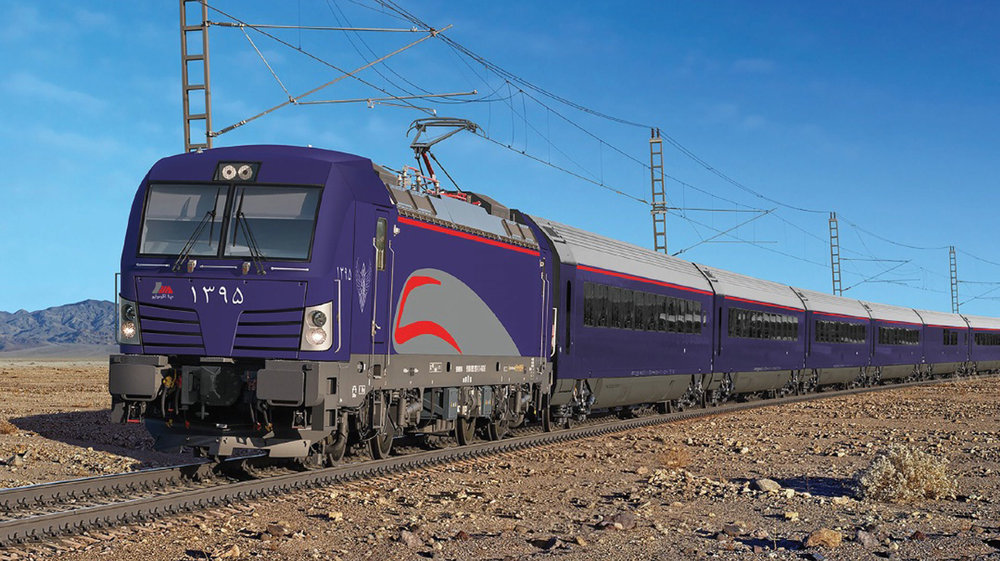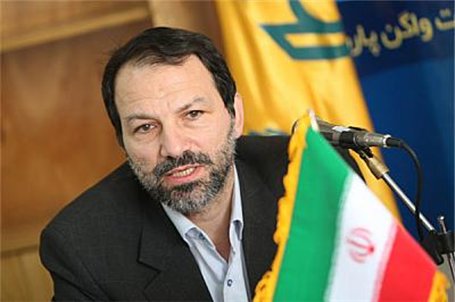Tehran-Mashhad railway electrification should be first priority

Abbas Ghorbanalibeik, the first director in the Islamic Republic of Iran Railways (known as RAI) appointed in 2006 to initiate railway electrification in the country, believes that the first electrification of railway line from Tehran to Mashhad should be conducted in Iran as soon as possible so that we can expand this system to the other lines after that.
In a telephone interview with the Tehran Times, the leading railway expert, who was a former vice president of RAI for planning and international affairs, answered questions about different aspects of electrification of railway lines and also establishing high-speed trains in Iran. The text of interview comes as follows.
Q: How does these projects (electrification and high-speed) seem necessary in the country for the moment?
A: Tehran-Mashhad should be the first line to be electrified as soon as possible and then we can benefit from our experience in that line for the electrification of other lines.
Even if its cost is available, high-speed project is not the first priority for Iran at the moment. The priority is attached to the electrification.
Q: Renovation of existing fleet seems to have more priority over electrification projects to increase the speed, doesn’t it?
A: For Tehran-Mashhad line given the large number of its passengers, renovation of current fleet is actually more expensive when compared to the electrification project. The maintenance costs are also high in the current line.
When the speed of train is increased it has some benefits both for the passengers and government.
The next one is that, for example in case of Tehran-Mashhad line, as the time of trip is about 12 hours when the train arrives in Mashhad from Tehran it should stay in the station for some hours and then come back to Tehran. But in the shorter time of trip through the higher speed when train arrives in Mashhad it can immediately return to Tehran.
Shortest time of trip is the second advantage for the passengers. And the benefits for the government: the first one is that wagons with seat are used instead of seat/bed types and it means doubling number of passengers.
Q: How the ground is laid in the country for implementation of such projects?
A: We are completely reliant on the foreigners in terms of diesel engines in diesel locomotives. But we are strong in the field of electricity generation in the country; we have no problem for supplying required power because we are 95 percent self-reliant in this due.
When it comes to the electric locomotives, we can reach self-reliance soon.
We have much better condition in electrified line and locomotive when compared to the diesel locomotive.
Q: What are the main prerequisites?
A: Having the contractors to implement the projects and also the manufacturers for manufacturing the electric locomotives are the two main requirements.
Q: How can we be sure that such projects will be completely carried out?
A: High-speed lines are not established in a single project in developed countries, except for some countries like Japan that the gauges are different. They have electrified their high-traffic lines many decades ago and then establish high-speed lines in a project with several phases.
Therefore, if we want to establish Tehran-Mashhad high-speed line, we should first electrify the existing line, so we had previously planned to electrify Tehran-Mashhad line first and then implement the first phase of Tehran- Mashhad high-speed dedicated project in Garmsar-Semnan or other sections of the existing line.

Abbas Ghorbanalibeik, the first director in RAI appointed to initiate railway electrification in Iran
Q: Which lines are prioritized?
A: Based on the studies conducted by the international consultant some ten year ago, four lines including Tehran-Mashhad, Tehran-Bandarabbas, Tehran-Tabriz and Chadormalu-Ardakan were attached priority in a row for being electrified.
Q: How should foreign investment and technology be used for implementation of these projects?
A: For Tehran-Mashhad project that a speed of 200-250 has been planned for it, we should definitely benefit from foreign investment, and even technology especially for locomotives.
But for some other projects we have no special problem in terms of electrified line, but for their locomotives and substation posts we are better using foreign investment and technology in order to implement the project sooner.
But as I emphasized before, all these projects should be carried out in several phases.
Q: With which countries have negotiations been conducted to attract finance?
A: We had already negotiated with different countries including Croatia, Germany, France, China, Russia, Italy, India and Spain. But we should move in a way that we reach the result as soon as possible, because we are losing the time.
Q: Has Iran made any negotiation with other countries for receiving technical knowledge?
A: Yes, negotiations have been made and are still running with different countries.
Q: How could implementation of such projects highlight Iran’s role in the East-West corridor?
A: If we electrify Tehran-Mashhad and then establish high-speed train in this route and if we also electrify Tehran-Tabriz line it would play some significant part in boosting the capacity in East-West corridor from China, ECO countries as well as India and Pakistan to Europe.
Q: How are the government and also RAI determined in this due?
A: There is enough determination. Transport Minister Abbas Akhoundi is very serious in this due and also President Rouhani supports it. RAI is also very serious to do so. But seriousness is not enough. The good roadmap is another major factor, specifying the priorities and also coordination between all these factors is another point to be considered in this due. Any small ignorance could postpone this important national and regional project.
